“It’s not a mountain, it’s a volcano,” my three year old remarked as we headed out on our first hike. Mt. Rainier is the tallest volcano and the fifth highest peak in the contiguous United States. It’s considered an episodically active volcano by geologists which means it will erupt again in the future… I made the mistake of watching Dante’s Peak before embarking on this trip, great movie but terrible timing on my part. Mt. Rainier will challenge you both physically and mentally as you embark on your photography adventure. There is a ton of ground to cover and, unless you live nearby, most likely little time to cover it. In the article below I’ll talk about a couple of my favorite places to photograph and some tips to get the most out of your adventure.
Lodging
As this trip was fairly last minute, there was no room in the Inn so to speak… Paradise Inn, that is. I would absolutely recommend staying inside the park (or most any National Park) if you have the option. We stayed about 15 minutes outside of the park and it was a fairly lengthy drive to get anywhere (Paradise, a popular place full of beautiful trails was an hour and 15 minutes away while Sunrise was approx. 45 minutes away). Remember, it’s not like you can hop on a road and drive over or through the mountain. You spend most of your time driving around and switch backing up and/or down the mountain.
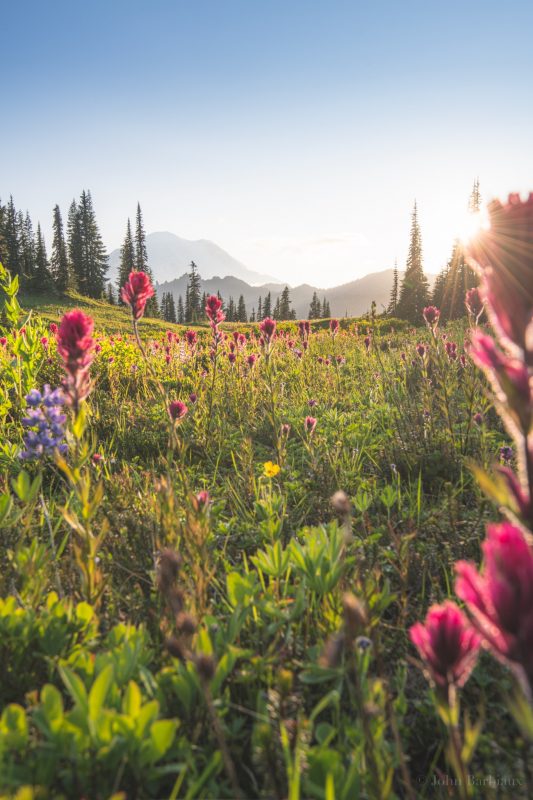
Favorite Photography Spots
There is a good chance you’ve already done a good bit of research before you landed here and if so, I can almost guarantee you’ve written Reflection Lake down as a potential spot to spend some time photographing Mt. Rainier. Now, pick up your pen and draw a line right through it. I assure you, it’s not nearly as beautiful as some other options. For instance, Tipsoo Lake simply eats Reflections Lake’s lunch when it comes to sheer beauty. Additionally, there is more interesting foreground at Tipsoo lake (wild flowers, trees, etc.) than at Reflections Lake. Smart money says skip Reflections Lake all together and invest that time in the more beautiful Tipsoo lake area.
Pro Tip: Most people park at the Tipsoo Lake parking lot and only walk around the first lake they come to. Interestingly, the lake across the road (Little Tipsoo Lake) is even more beautiful and far less crowded. You’re welcome!
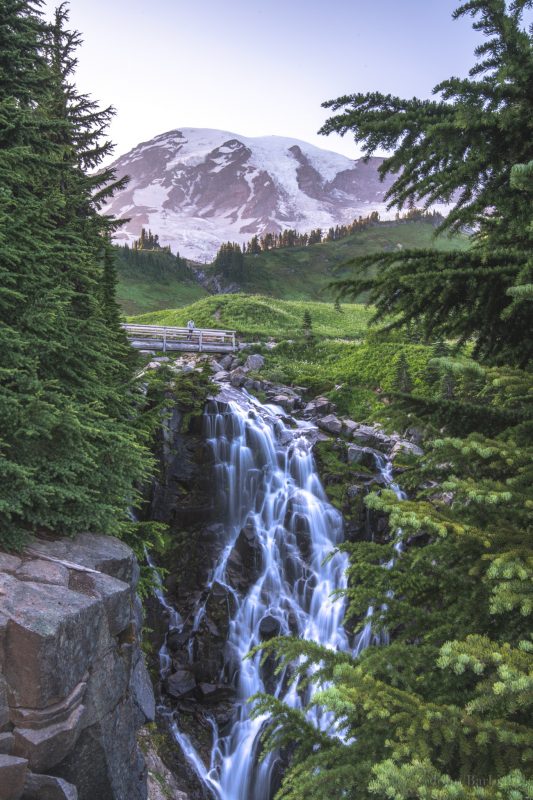
If you’re looking for a waterfall then Myrtle Falls is a shoe-in. It’s beautiful and easy to get to. Unfortunately, that means it’s super crowded and you’ll likely have other photographers and hikers in your image as they cross the bridge. The only solution is to wake up before everyone else and hope you were the only photographer to have that idea. There are only really two spots to view the falls from a lower vantage point and they are big enough for three photographers max… So don’t be the fourth. While I was photographing Sunset I would let other photographers who were late to the game squeeze in as close as possible but ultimately someone bumped my tripod and dashed my hopes of creating any type of merged image.
Pro Tip: Don’t get eaten by a Mountain Lion.
How To Pack
Light. Even if a trail says it’s easy it probably has a significant elevation. Remember, you’re hiking on a mountain. My camera backpack probably weighs in at around 50 pounds with 2 D850’s, multiple lenses, and a Leica M10-P with lens, as well as all my filters, batteries, etc.. Now, I enjoy a good challenge and consider my hikes to be a part of my workout and the journey to a great photo… But I understand most people aren’t as crazy as I am and would prefer not to “feel the burn” on their way to capture a beautiful sunrise or sunset. Even with my abnormal affection for difficult journeys I found myself wondering just how light the Nikon Z7 would have felt in comparison to the D850 rocks in my pack.
Be sure to pack some way to communicate with family/friends/emergency responders as your cell phone will probably just be a paper weight (or remote trigger for your camera) as there is little to no cell coverage for AT&T or Verizon (my wife has one, I have the other). I recommend the Garmin InReach Mini*, it’s been with me since my trip to Death Valley and works as a satellite phone that can only text but you can connect it to your smartphone via Bluetooth and text through the app as if you were texting through any other app. It costs about $60 a month but it’s worth every penny the first time you’re in the middle of nowhere and you’re able to let your family know you are okay and you’re running late. Oh, and you can pause your subscription anytime which saves a ton of money (I only turn it on the months I’m traveling).
*I am not sponsored or paid in any way to recommend any products, but I do get a small percentage of what you spend if you click an Amazon link on my website (it does not increase your cost) and that is what keeps PhotolisticLife.com running.
Speaking of packing… It should go without saying that you should be using a super comfortable backpack large enough to carry more than just your camera gear while exploring wilderness areas. It’s probably safe to assume you won’t eat your camera if you get stuck in the woods for some reason. I’m pretty sure, unless your name is MacGyver, you won’t be able to fashion a shelter out of your SD Cards and a tripod.
What To Pack
Let’s assume you don’t need someone to tell you to bring your camera, batteries, battery charger, and tripod. Those things should go with you just about everywhere but the bathroom. What you’ll definitely need that you may not be thinking of is a graduated neutral density filter. Almost every one of the images in this article were taken with just such a filter. About a year ago I switched from B+W screw on filters to Lee filters and have not looked back since, I highly recommend them.
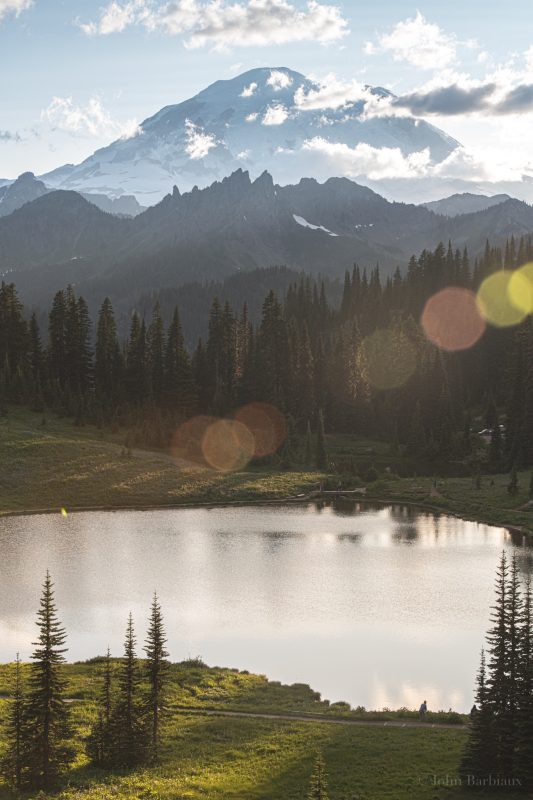
The majority of my images were shot with the .9 graduated neutral density filter from Lee. I typically use all soft grads (they have soft, medium, hard, and very hard which refers to the rate at which they transition from clear to filtered). A soft grad has a smooth transition that never seems to be noticeable in images. Unless you love wasting time, I’d invest in a great set of filters and it will eliminate the amount of time you have to spend in post processing. Additionally, there are bragging rights that come along with being able to compose images like the one above in incredibly difficult lighting… Who will care is an entirely different subject.
I only really needed two lenses on this trip, the Nikon 16-35mm f/4 and the 70-200mm f/2.8. Had I not had three different camera bodies I’d have also packed the 24-70mm f/2.8 lens (due to the weight). If you said I could only take one lens I’d take the 24-70mm f/2.8. If I could only take one camera body I’d take the Nikon D850 or the Z7 (the Z7 would be my first choice).
Conclusion
Mount Rainier National park is a playground for photographers. There are hundreds of miles of trails and beautiful meadows, lakes, and terrain wherever you look. If you want original looking images you need only hike a few miles in any direction and you’ll find yourself seemingly all alone. It’s also one of the most easily accessible National Parks I’ve had the pleasure to visit, being only an hour and a half from the Seattle airport.
Some of the best preparation I could recommend has nothing to do with photography, I’d recommend you exercise before embarking on this trip (actually, I’d recommend exercise all the time). You’ll quickly find yourself running out of energy and/or air as you climb in higher altitudes unless you focus on increasing your VO2 max (Google it).
Finally, be sure to bring a pack large enough for your camera gear as well as some survival gear. The last thing you want to do is find yourself stranded or lost in the wilderness with nothing but your camera gear. I can’t stress the Garmin InReach Mini enough, there is nothing like having emergency services at your fingertips 24/7 anywhere in the world you decide to go.
Thanks for visiting PhotolisticLife.com. If you have any questions or comments be sure to leave your thoughts below. You can follow my work on Instagram @PhotolisticLife… For now, I hate everything Facebook so don’t be surprised when I jump ship for whatever social media platform will come along and eat their lunch.

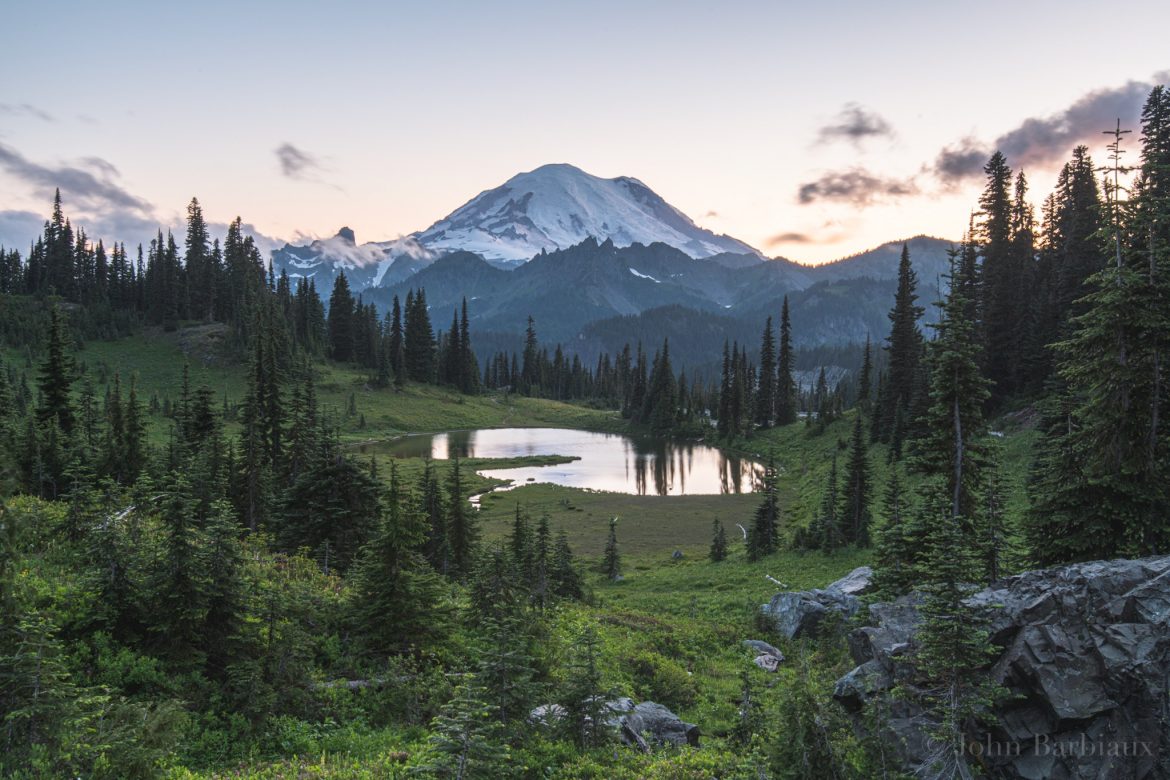
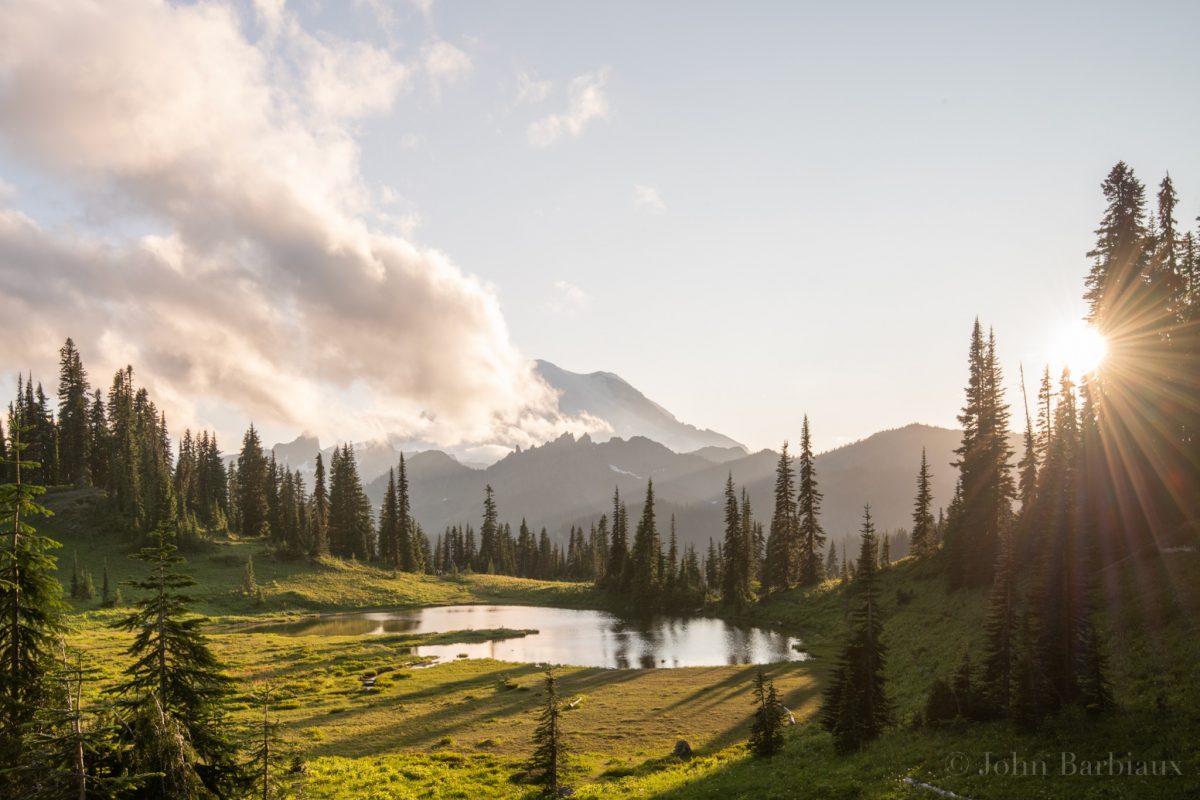
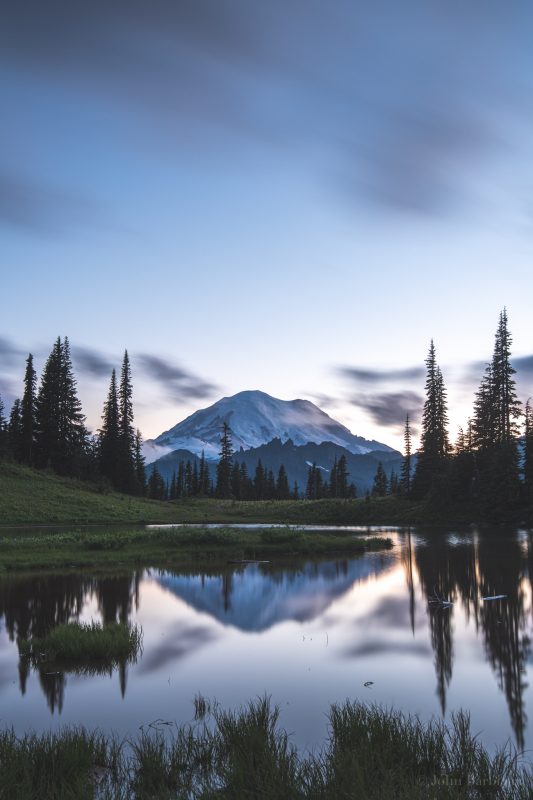
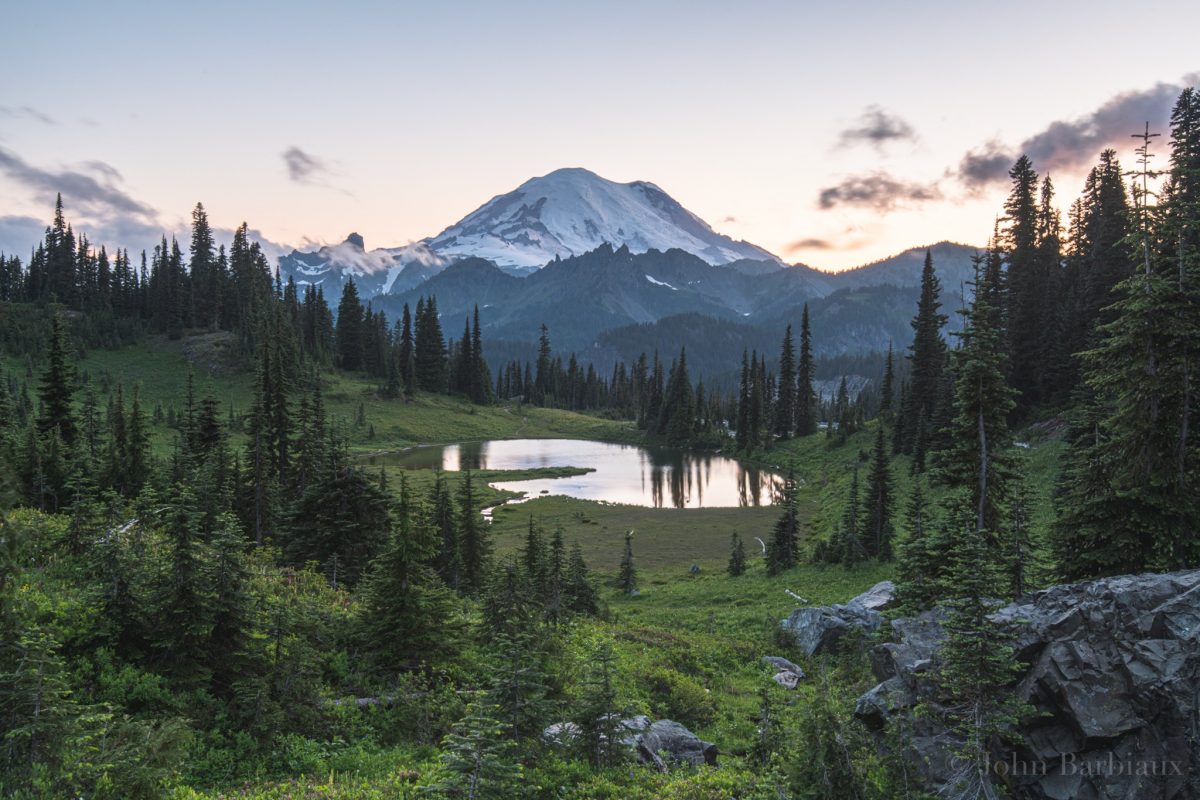
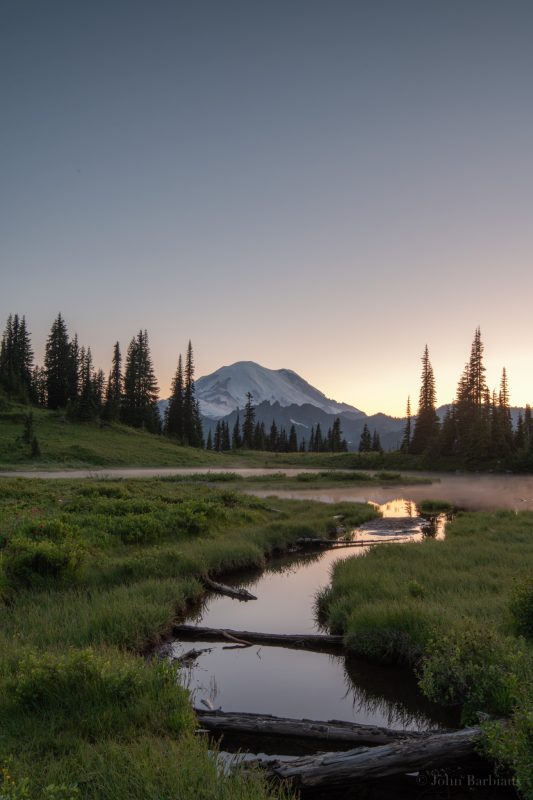
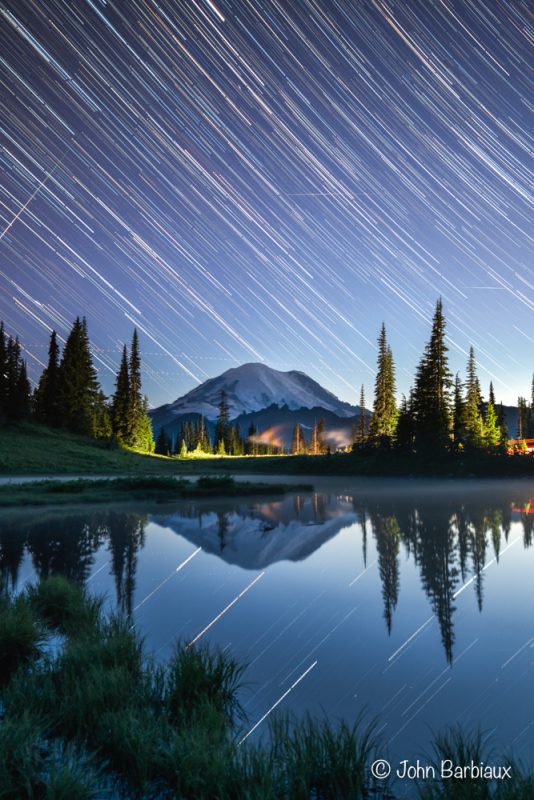
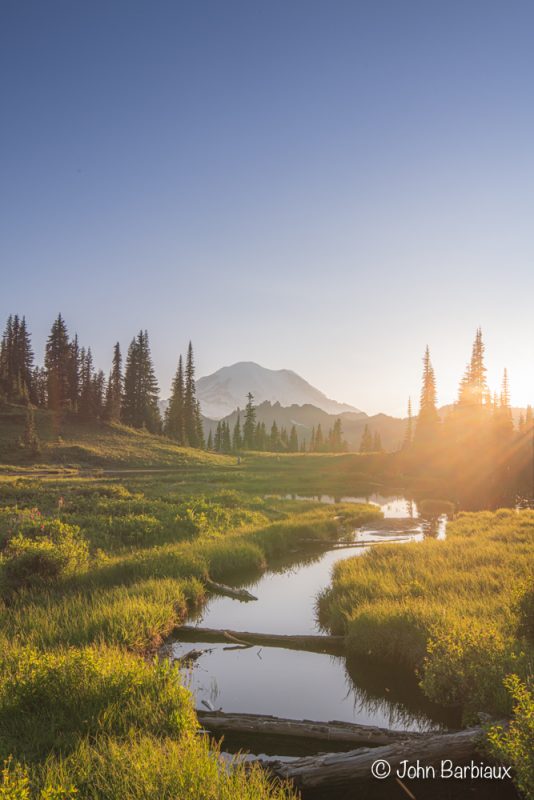
Thanks for this article — entertaining and informative, as always.
Thank you for reading and commenting! I always appreciate the feedback. Have a great weekend.
I have been debating where my next American adventure lies. My wife is from Wyoming and I have never been to Jackson Hole. I also have great friends in Seattle and need to see them sometime me soon! I think your points about exercise is key. But man! 2x D850 and an M-10p?! I thought I went overboard with my D850 and D750 for a trip to Finland last summer. I bet my gear of choice is at least 15lbs lighter. ???? Keep up the great work!
Haha, yeah, I like to think of it as overly prepared… The truth is, I’ve been to some places where you can’t realistically change a lens without getting copious amounts of debris into the body and having two bodies, one with telephoto lens and one with wide, eliminates me having to risk damage. The M10-P is just my preferred shooter for most everything that does not require a tripod, it’s easy to wear around my neck all day without feeling like I’m wearing a noose. I struggle with the same decision regularly, every adventure is an investment and I hate to waste money or time. I have not done Jackson Hole either but have heard it is beautiful. Seattle seems like a lot of bang for the buck since you can get to multiple national parks in relatively little time. Olympic National Park and North Cascades are on my short list, I think either would be an amazing experience. Good luck!!